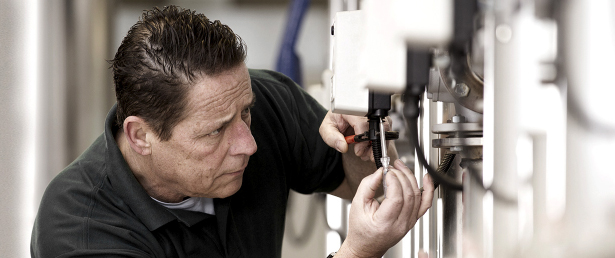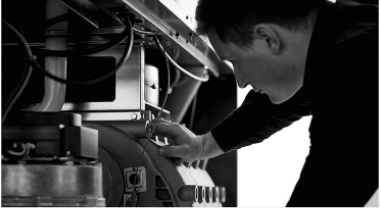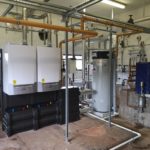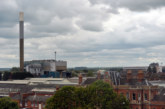 Making sure that heating and hot water systems are safe to return to should be a key consideration for any organisations involved in a building shutdown. Andy Green, Technical Director at Baxi Heating, outlines the maintenance programmes that should be implemented to ensure that the system in an unoccupied building remains in top condition, while minimising energy costs.
Making sure that heating and hot water systems are safe to return to should be a key consideration for any organisations involved in a building shutdown. Andy Green, Technical Director at Baxi Heating, outlines the maintenance programmes that should be implemented to ensure that the system in an unoccupied building remains in top condition, while minimising energy costs.
Making sure that heating and hot water systems are safe to return to should be a key consideration for any organisations involved in a building shutdown. Andy Green, Technical Director at Baxi Heating, outlines the maintenance programmes that should be implemented to ensure that the system in an unoccupied building remains in top condition, while minimising energy costs.
In these difficult pandemic times, many organisations have been forced to close their unoccupied buildings. But even when a building is almost empty of people, it’s important to protect the heating system.
So how best to go about this? If the building shutdown period is limited to two to three months, as is anticipated with the current crisis, our advice is to leave wet heating systems in operation at a reduced temperature, at around 14˚C. Maintaining some level of heat output by running the heating system at a reduced set temperature will keep the building dry and avoid the possibility of damp entering into the building fabric.
Lowering the set temperature while the property is empty will help keep energy bills down while simultaneously protecting the overall heating system.

Keeping the system running will also reduce the risk of microbial contamination. If hot water systems are left full of water with no circulation — for example, if the gas supply to a water heater is turned off — this can result in deposits clogging the system and cause corrosion which will reduce its efficiency and could ultimately require a system replacement. The risk of a legionella outbreak is also high as stagnant water favours legionella growth.
Isolating the heating system completely and draining it down might appear a tempting option to save energy costs. However, this would be a false economy as there is a danger that it could introduce air into the system that would in turn lead to corrosion within the pipework. Additional costs would be incurred from flushing and re-dosing the system with suitable inhibitors prior to the reinstatement of the heating system. Further, moving components like pumps will not perform well if left inactive for a period of time.
Preventative maintenance
It’s also important for building operators and facilities managers to introduce a low usage maintenance schedule. This should be applied routinely in empty buildings to ensure that the system remains in top condition. We recommend implementing the following reduced weekly maintenance programme for an unoccupied building:
- Carry out a visual inspection of the plant once a week, even where there is remote monitoring capability of both the building and heating system, to ensure that there is nothing untoward.
- Keep moving parts like pumps operating for ten minutes once a week to help prevent them seizing and failing when the building is reactivated. Most control systems will build this into their strategy.
- Allow the domestic hot water system to reach pasteurisation temperature (60˚C) for one hour once a week to prevent bacteria forming and avoid the risk of legionella. Legionella bacteria are dormant below 20˚C and do not survive above 60˚C.
- It’s worth noting that that some water heaters, like the Andrews Water Heaters MAXXflo Evo unit, will have onboard controls that operate a legionella cycle to ensure that the whole system is brought up to pasteurisation temperature by monitoring the secondary return temperatures.
Long-term closure
If a building is to be closed for an extended period of time, there is the option to drain down the heating and hot water service. The system should be isolated completely, ensuring frost protection from the system to prevent freezing. The building would need to be decommissioned completely and ventilation run through the building to prevent the build-up of microbial contamination.
Reactivating a building
So what happens when the building needs to be reopened? The longer the building is left empty, the more involved the maintenance required to bring the building up to speed. Removing stagnant water before re-opening the building is key, as is the need to chlorinate the hot water system to remove potential legionella bugs should microbiological sampling highlight anything untoward.
We advise implementing the following 24-hour maintenance regime prior to reopening the building:
- Twenty-four hours before bringing the building back into operation, fill the system, remove the air, and bring the hot water system back up to > 60˚C, pasteurisation temperature.
- Open all of the outlets until they reach at least 60˚C to make sure that all stagnant water is removed before shutting them. Flush the outlets and pipes through thoroughly to remove any stagnant water and carry out operational checks.
- Carry out microbiological sampling to ensure that there is no contamination of the hot water supply. Depending on the outcome of the sampling, there could be a requirement to chlorinate the hot water system to remove anything untoward, such as potential legionella bugs.
- Insurance inspections will also need to take place to ensure that the property is functional and compliant.
 Follow best practice
Follow best practice
Once the building is reactivated, the normal maintenance regime should be resumed. This would include the requirement for domestic hot water to reach pasteurisation temperature for at least one continuous hour once a day as outlined in HSG274 guidance on the control of legionella bacteria in water systems in operational buildings.
Applying best practice maintenance programmes should be a priority at all times to ensure the safety of the heating and hot water system as well as the longevity and efficiency of equipment.
There will be an understandable desire to reduce running costs wherever possible in these unprecedented times. But it is essential that building owners and operators as well as facilities managers ensure that adequate maintenance and preventative regimes are taking place on a regular basis even in unoccupied buildings.
Ensuring good quality water and eliminating the risk of contamination is the safest way to enable the system to be reactivated quickly when required. And as heating and hot water is a vital service, this, in turn will allow buildings and the organisations they house to bounce back rapidly once we re-emerge from lockdown.









